Healthful Gardening
When it comes to promoting the health benefits of gardening and plants, retailers are still in the waiting room. Few lawn and garden centers promote lugging bags of mulch around, along with weeding, digging and planting, as calorie-burning exercises.
The health benefits go beyond the individual, too. Trees and shrubs clean the air of pollutants, and flowering plants encourage pollinating insects and birds to create flowers, fruits and vegetables, all benefits to the environment. Just the act of gardening improves one’s physical and mental health, according to the Summer 2006 Garden Trends Research Report by the Garden Writers Association Foundation.
Uplifting Results
When asked how consumers planned to use their lawns and gardens, 52 percent said for relaxation or spiritual retreat. Nearly 30 percent said they would use their landscapes for growing food, physical exercise or as a child’s play area. Forty percent said they use their landscapes for social or entertainment spaces.
A vase of cut flowers in the home or office boosts the spirits, too, according to a recently released behavioral study from the Massachusetts General Hospital and Harvard Medical School. People feel more compassionate toward others, have less worry and anxiety, and feel less depressed when fresh cut flowers are present in the home, said Nancy Etcoff, a researcher at the two institutions.
“Other research has proven that flowers make people happy when they receive them,” Etcoff said. “What we didn’t know is that spending a few days with flowers in the home can affect a wide variety of feelings.”
Besides the research above, there are demographics that reflect a developing interest in all things natural, sustainability and niche retailers.
“Immigration, aging Boomers and a host of other demographic shifts will be shaping and reshaping the retail landscape for years to come. Retailers who set their sights on micro-merchandising and micro-marketing will triumph; those who run with the herd may find themselves getting trampled,” reported the National Retail Federation’s December 2006 STORES.
“Then there are the nation’s 76 million Baby Boomers, the oldest of whom turned 60 this year. They continue to flex their enormous spending power, but there are signs that they’re spending differently than they have in the past, with greater emphasis on health, wellness and experiences and a reduced focus on accumulating ‘things.’ The $2 trillion per year they have been pumping into the nation’s economy may begin to shrink if retailers can’t find a way to light their collective fire,” STORES said.
Consumers’ interest in nature and wellness may be an untapped revenue stream that can improve the health of a garden center’s bottom line.
Show Them How
Growing foods and herbs. Growing your own food ensures the produce is fresh and loaded with nutrients for the family, but some consumers may need to be shown how or what to do, said Charlie Nardozzi, senior horticulturist at the National Gardening Association (NGA). The NGA has many education programs for schools that could be easily adapted for use in garden centers. “Even in very small spaces, you can grow your own herbs and food,” he said.
Garden centers can promote this by potting herbs in a container. Or create a pizza garden by grouping tomatoes, peppers, basil and oregano together on a bench or planting them together in a demonstration garden or container, he said.
“Basil and tomatoes are typical Italian ingredients, so merchandise them together with a recipe. Sage, parsley and thyme are used in seasonings of all sorts but particularly with poultry. Alas, people are so used to stuffing from a box that they forget the basics,” so place them together with an image of stuffing or a recipe, said Kate Copsey, an Atlanta-area writer and member of the editorial team for the Herbalist, published annually by the Herb Society of America.
Herbs 101. Use signage or did-you-know factoids to talk to the consumer about plants, companion planting, crop rotation and nutrition information, Nardozzi said.
“In smaller nurseries, herbs are placed at one end of the perennial aisle and not labeled at all. Larger nurseries will have a sign above the most common herbs, usually culinary. It’s rare to see medicinal herbs beyond chamomile for sale in a nursery.”
One thing retailers should not do is advertise them as “healing or medicinal herbs or in any other way insinuate they are a cure for something,” Copsey said. “To use a sign over a bunch of herbs that says ‘Traditional Medicinal Herbs’ is one thing. But to put a sign over valerian that says ‘will help you sleep’ is illegal, because you are stating a Á fact that has not been proven in accordance with the FDA rules.”
That being stated, retailers could do so much more.
“Tea herbs could be staged on their own, too. These are great tasting and can be mixed to personal tastes. But there’s a disconnect. People don’t connect herbs with tea bags. I come across people that think you have to dry the herb before you make it into tea. Again, retailers need to have recipes or even a demonstration on making herbal tea with a sampling session,” Copsey said.
Several herbs make great perennials, too, such as valerian, calamintha, monarda and stachys. These plants can broaden a garden center’s selection without necessarily adding more stock, she said. “It’s a matter of educating buyers and the staff about plants and their uses.”
Educating The Consumer
Informational materials. Support point-of-sale efforts and a well-trained staff with workshops, recipe cards, E-mail blasts or other forms of communication to the consumer about how to use plants in their lives, said Garnet Vaughan, owner of the Marketing Department, Greenwood, Ind., and a consultant for shopping center developers and hundreds of chain and independent retailers.
“I think it is all about consumers needing more information about these benefits at the point they are ready for it,” said Vaughan.
Many gardening consumers tend to touch or smell plants, read tags and seek information from signs or employees. This tendency to linger, Vaughan said, means they are receptive to learning new things. “I would highly recommend short, very short, tidbits backed up with a handout of some kind, maybe even a postcard series,” something consumers can take with them, she said.
“Send recipes, horticulture tips or arrangement suggestions via weekly E-mail blasts, and monthly, send recipe-size cards with additional information. Consider sponsoring a recipe competition, and use the winner’s submission on the cards. The winner could receive a 10-percent discount for the year. Recipes don’t have to be for food. They could also be ‘how tos’ for table decorations or bath oils,” Vaughan said.
Signage can promote the positive aspects of gardening, such as how many calories are burned in an hour of weeding, trimming or raking and how spading, lifting, tilling and raking improve muscle tone and strength, she said. For instance, researcher Barbara Ainsworth reported in 1996 that using a walk-behind power mower, planting a tree or trimming shrubs spends as much energy as playing softball or riding a stationary bicycle. This could be tied in with a 1-day special promotion at the shop with demonstrations on the proper techniques for lifting, bending, kneeling and other garden-related activities and exercises.
Sponsorships and workshops. Vaughan also suggests garden centers conduct or sponsor workshops centered on certain plants or items, such as rosemary how to grow it, cook with it or make vinegar or a topiary with it. A similar tact can be taken with lavender, such as how to use essential oil, how to make lavender candles or bath salts, how to dry it and stuff a sachet. Tap into the expertise of area Master Gardeners, members of the local herb or native plant societies, or gardening experts to conduct the workshops.
Garden centers can get a lot of rewards when sponsoring related events, said Will Carlson, co-president of Flower Promotion Organ-ization, which helped fund the Harvard research project. He cited America in Bloom as a way garden centers can support their community through beautification while promoting an activity at the heart of their businesses planting flowers.
Working with children. Creat-ivity is key for reaching younger consumers, including children, to get them interested in gardening, said Melinda Myers, a horticulturist, teacher and author who serves as a consultant at Stein Gardens & Gifts, a 14-store chain based in Milwaukee, Wis.
Demonstration gardens or inviting children to visit the garden center will help them understand what happens when they grow plants. It’s well known that many children do not have a clue about where tomatoes or peppers come from except the grocery store, she said.
Tours. Along those lines, garden centers can offer after-hours tours to teach consumers how to shop for plants and where to find things and to introduce them to what’s new, Nardozzi suggested. Consider having experts on hand who can provide horticulture tips or talk about the nutritional value of plants or other lifestyle uses.
Merchandising. It would be a good idea to merchandise ergonomically designed garden tools and accessories in one place and promote it with signage and demonstration samples. The exhibit could be tied into workshops on the ease of gardening in raised beds or containers or other techniques for older gardeners or those with disabilities, he said.
Carlson, too, encouraged retailers to call on local experts, noting that word-of-mouth goes a long way at building a reputation as reputable and interested in working with local gardeners, families, chefs and educators.
“You have to connect the dots for the consumer,” Carlson said. “We know the value of our products because we play with them all the time. When you connect the dot for consumers, you’ll see it’s just what the doctor ordered.”
SIDEBAR
Tips To Promote Healthy Gardening:
- Conduct a workshop on making herbal teas.
- Demonstrate how gardening burns calories and keeps the body fit.
- Install a demonstration flower and vegetable garden so consumers, especially children, can see how plants grow.
- Develop signage that gives tips and recipes on cooking with herbs.
- Invite customers and students to tour the garden center to learn how to shop, where to find things and how to select healthy plants.
- Make sure your staff is well trained about the plants you sell and that there is someone who can answer questions your consumers will have.
- Send E-mail or snail mail newsletters with articles about plants and their uses in your customers’ lifestyles.
- Call on local experts to conduct workshops or seminars on various topics, such as five easy vegetables for beginners or children.
- Get involved in local events that promote or support gardening activities, such as community gardens, classroom lessons or beautification projects.

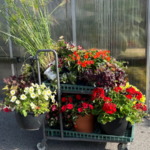




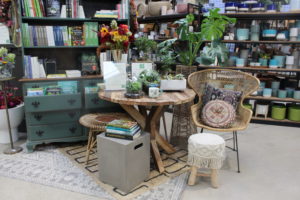
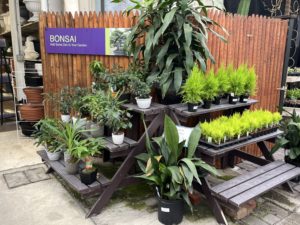
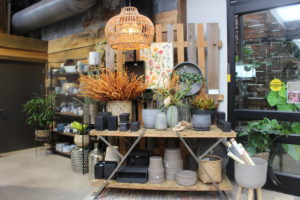


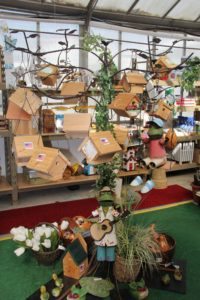


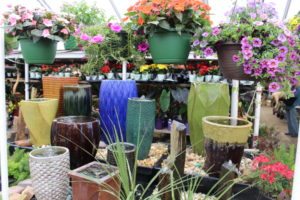



 Videos
Videos





